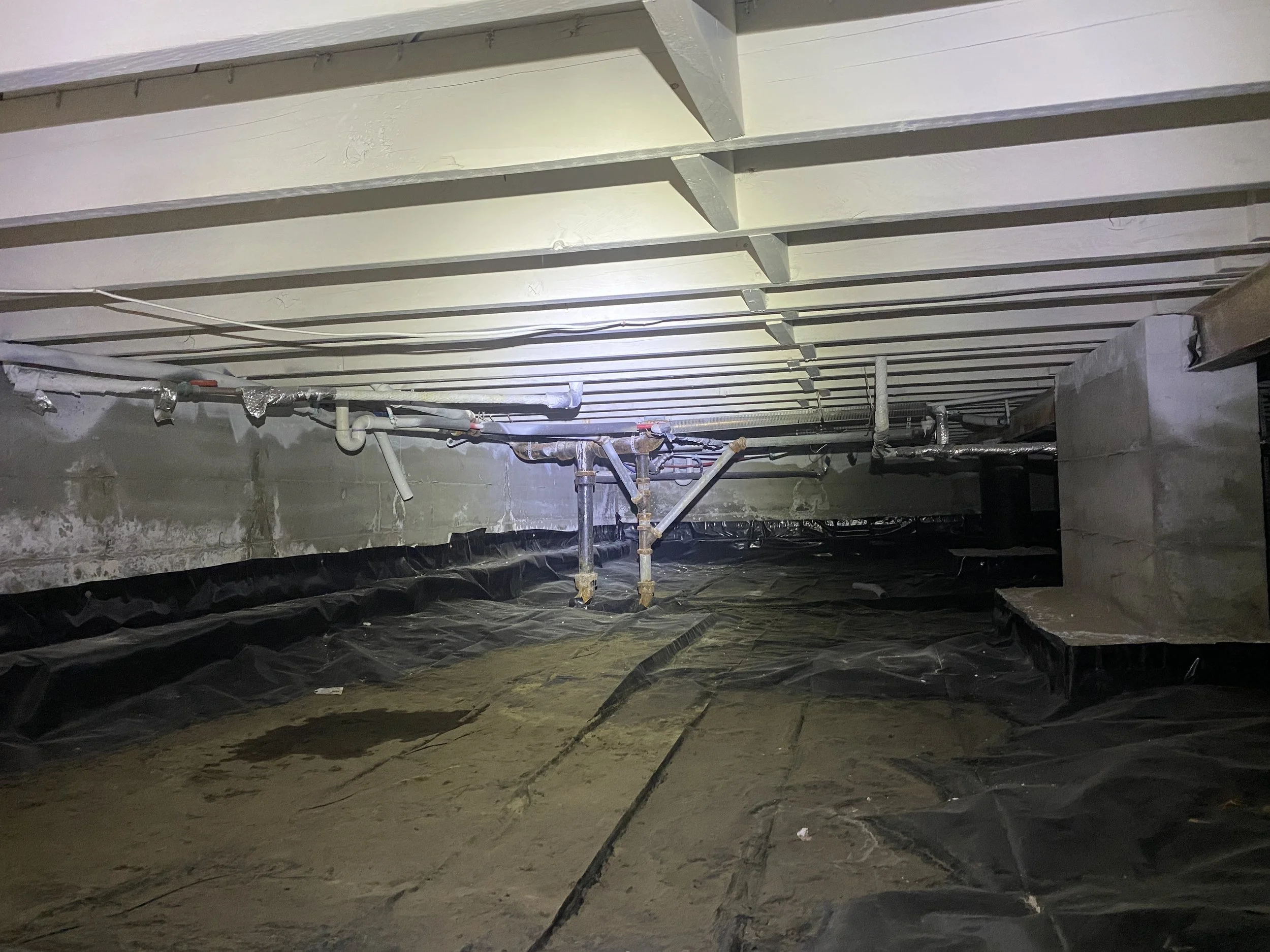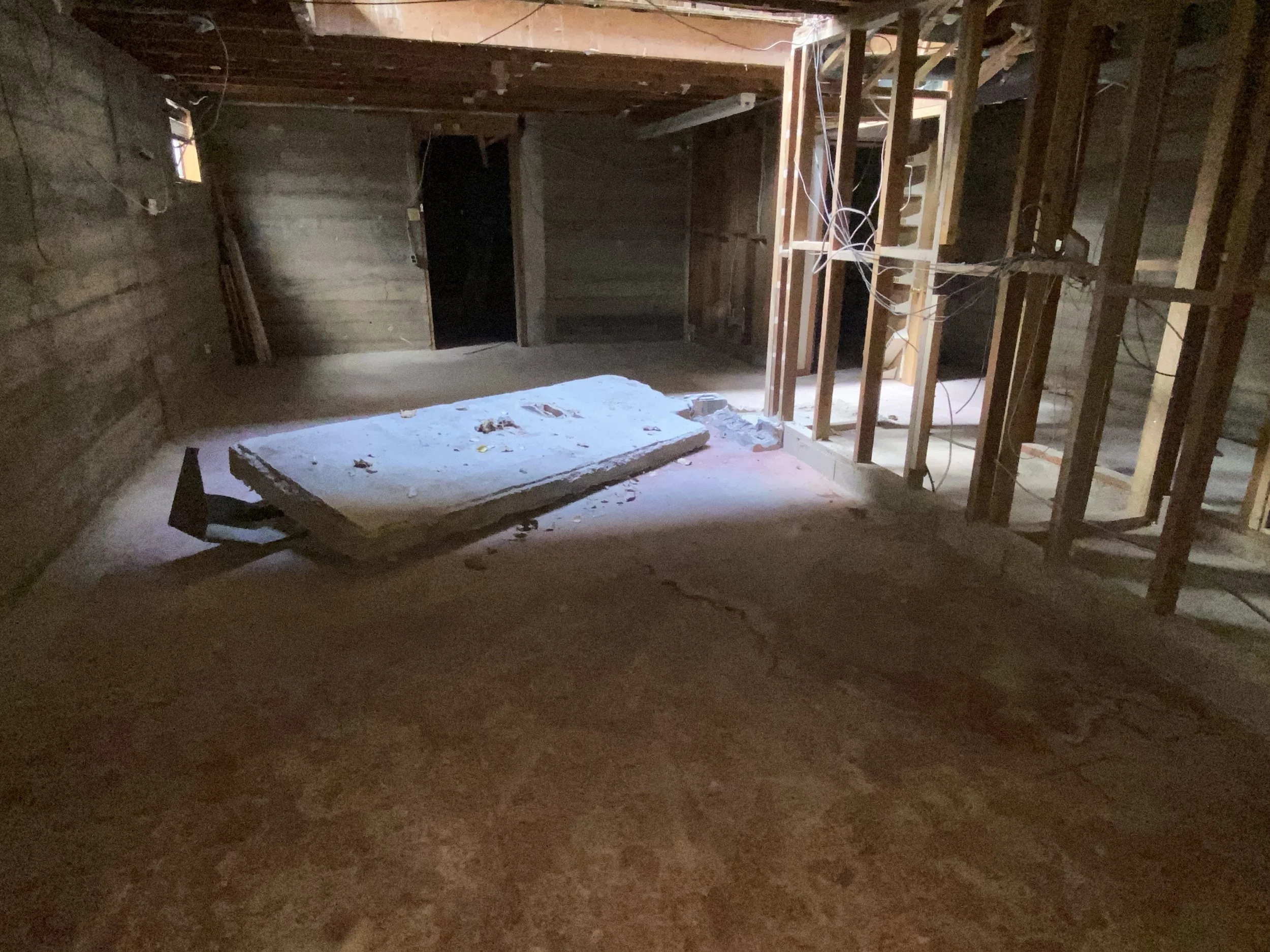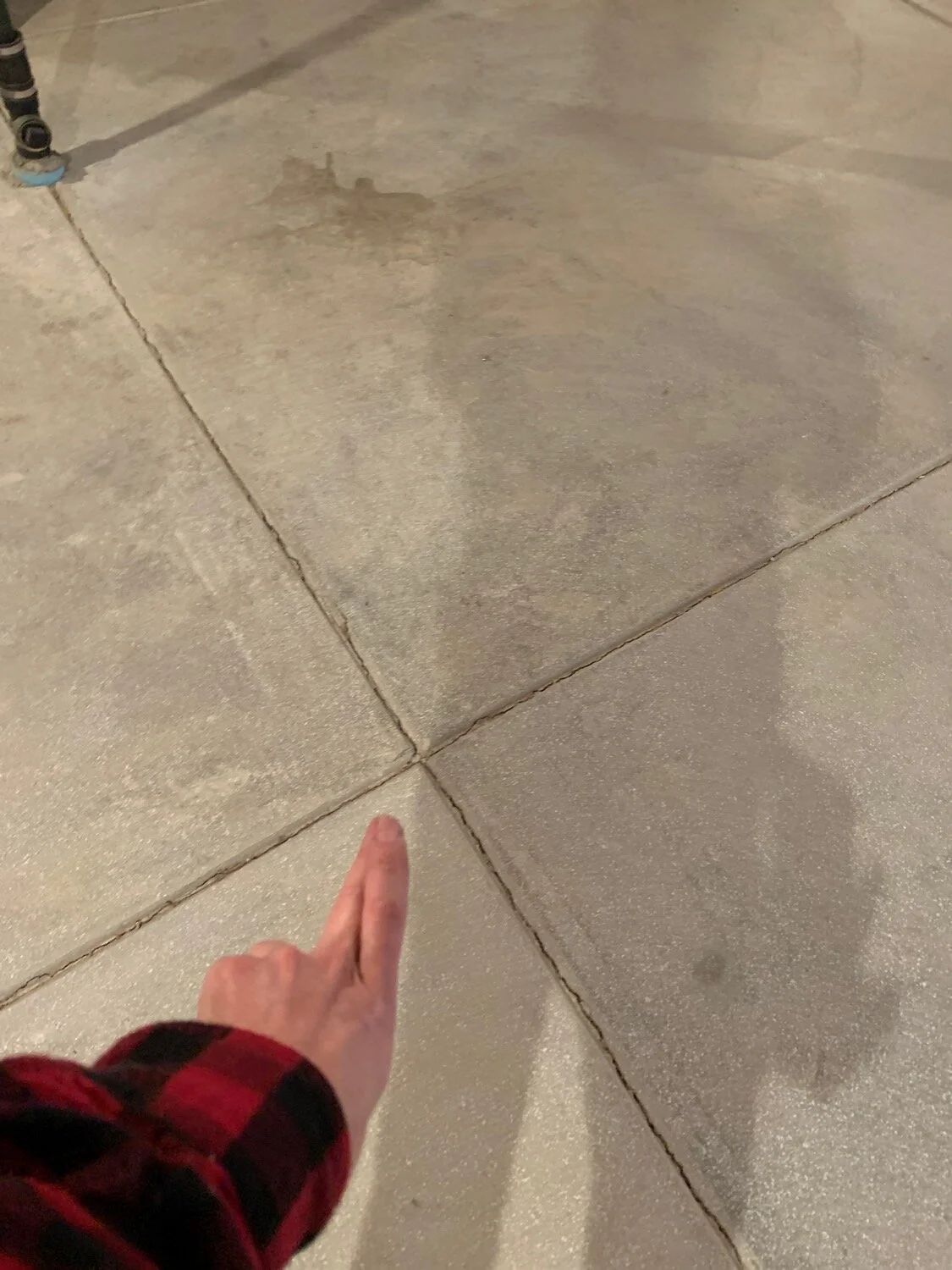Crawl space foundations, while common, require proactive maintenance to prevent moisture intrusion, structural movement, and energy loss. Understanding how expansive soils interact with crawl space foundations can help homeowners protect their investment and ensure a stable, comfortable living environment.
What's Crackin'? Foundations and Expansive Soils in Colorado, Part 2: Basement Foundations
Basements are an extremely common feature in Colorado homes due to the region’s expansive soils and the need for additional living space. While basements provide valuable square footage and extra protection against the elements, they also introduce unique structural challenges. In this installment of our series, we’ll explore common basement foundation types, potential defects, and how to determine when foundation issues require further evaluation.
Foundation Moisture Prevention
We have said it before, and we will say it again and again. Moisture management is critical when it comes to your home. We have seen firsthand how proactive steps can save homeowners from major headaches down the road, and conversely how improper moisture management has caused floods, structural issues and mold. Below are some tips to know and share.
Ensure Proper Grading Around the Home
The ground should slope away from the foundation at least 6 inches over the first 10 feet. This helps direct water away from the house.
At the very least, just make sure that water is draining AWAY from the home.
Maintain and Extend Downspouts
Downspouts should discharge water at least 4-6 feet away from the foundation.
Recommend installing downspout extensions to prevent water from collecting near the foundation.
Clean and Repair Gutters
Clogged or damaged gutters can cause water to overflow and seep into the foundation. Water spilling over from clogged gutters led to a lot of basement flooding last year during the heavy rainfalls that hit the Denver-Metro area.
Regularly clean gutters, especially in the fall.
Suggest ensuring all gutter joints are sealed and securely attached.
Install a French Drain or Drainage System
If the property has a history of water pooling near the foundation, recommend consulting a professional to install a French drain or other drainage solutions.
Check for Cracks in the Foundation
Small cracks can allow water to seep in. Inspect the foundation regularly and use an appropriate sealant to fill any minor cracks.
For larger cracks, suggest consulting a structural engineer or foundation specialist.
Maintain Proper Landscaping
Trees and shrubs should be planted at least 5-10 feet from the foundation to prevent root intrusion and soil moisture issues.
Opt for native plants that require less water, reducing the risk of over-saturating the soil.
Install a Sump Pump
In areas prone to heavy rainfall or high water tables, a sump pump can help remove excess water from around the foundation.
Recommend testing the sump pump regularly to ensure it's operational.
Waterproof the Basement or Crawl Space
Suggest using waterproof paint or sealants on basement walls to reduce moisture intrusion.
Install a vapor barrier in crawl spaces and ensure that it’s properly sealed.
Monitor Drainage After Heavy Rain
Walk around the property after a rainstorm to check how water is draining and identify any problem areas early.
What's Crackin'? Foundations and Expansive Soils in Colorado, Part 1: Slab-on-Grade
One of the most common observations we come across inspecting homes in Colorado are cracked foundations, most commonly made of poured concrete, concrete masonry units or brick. This issue is also a higher priority item a potential buyer may consider when deciding to go forward with or walk away from the purchase of a home.




